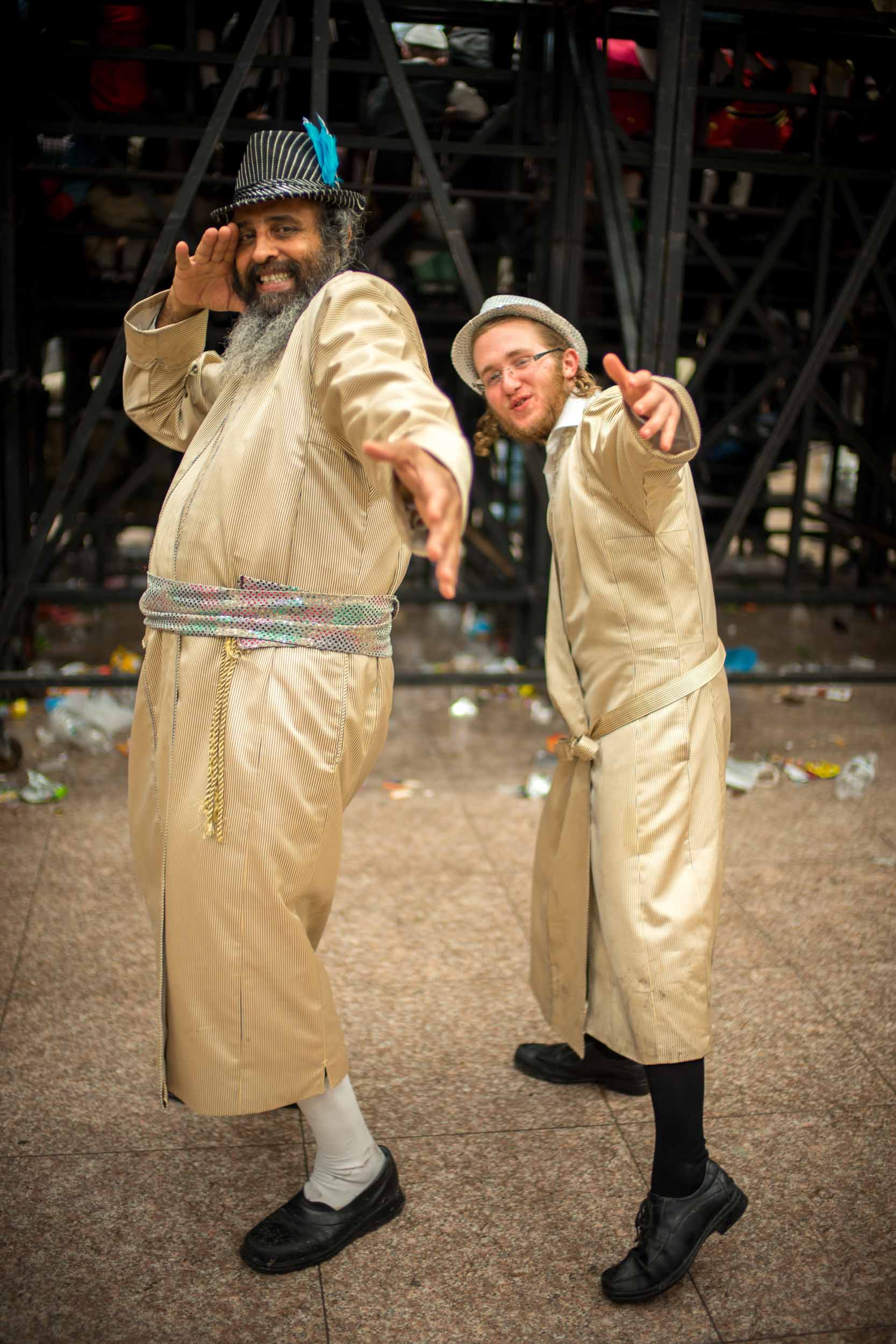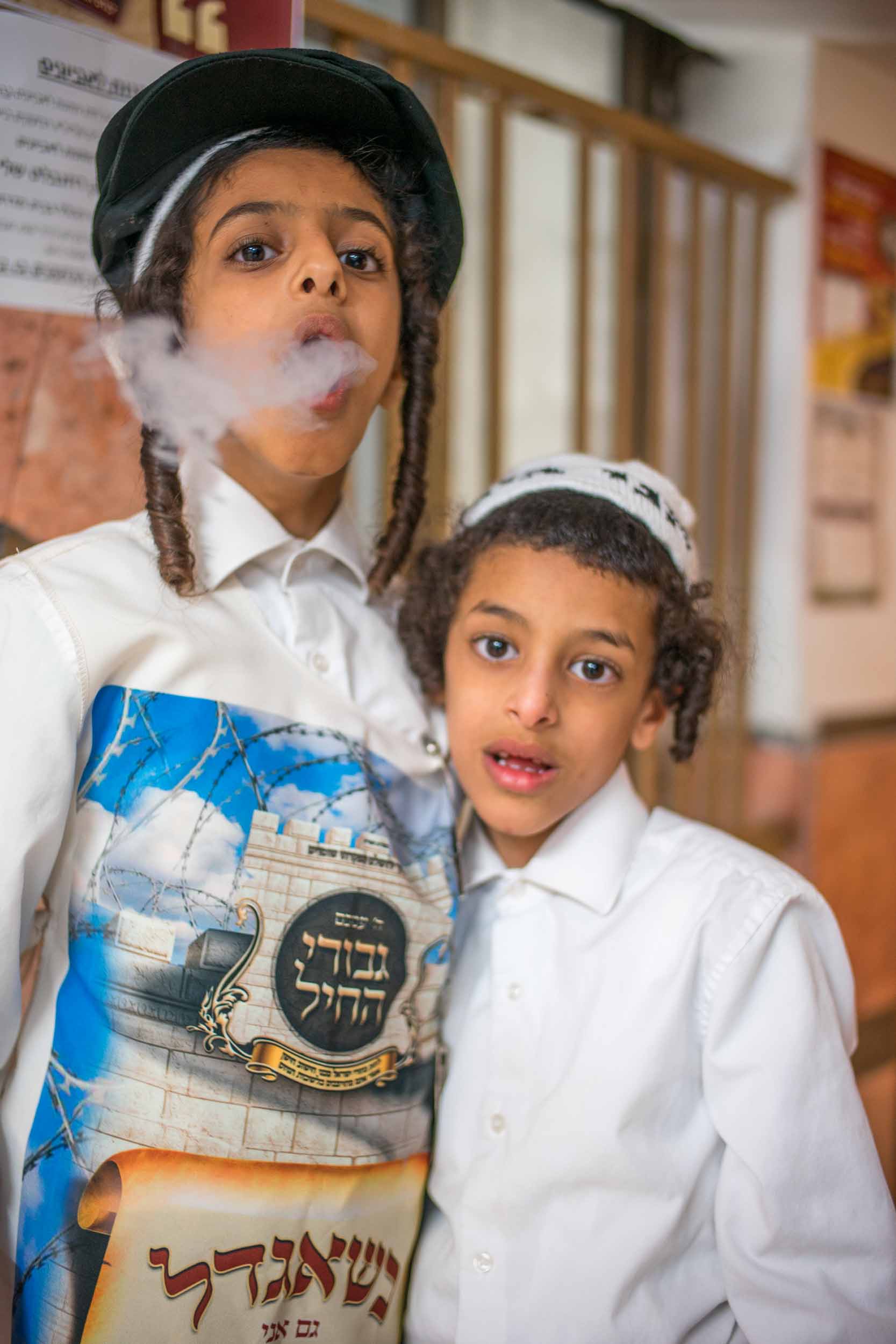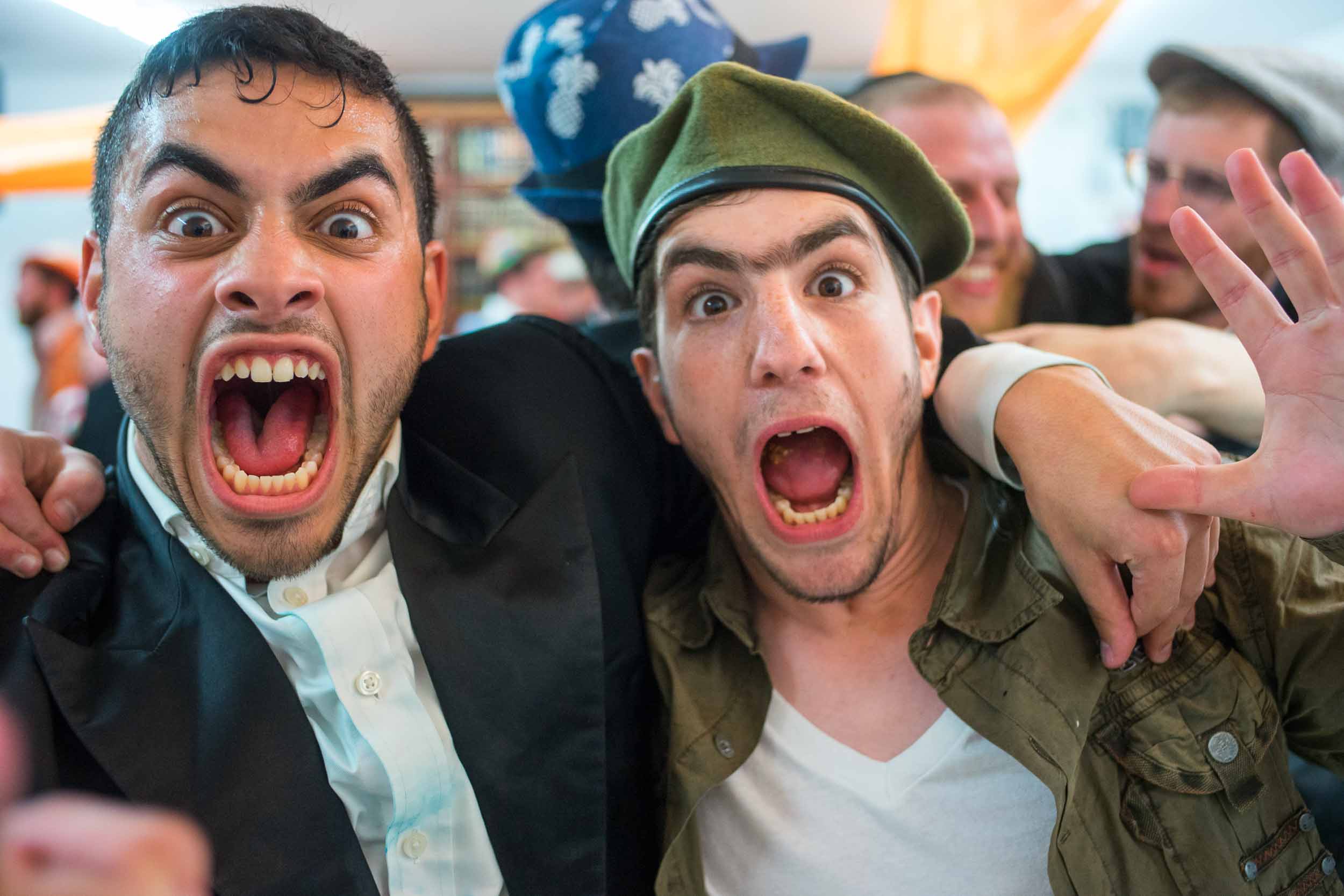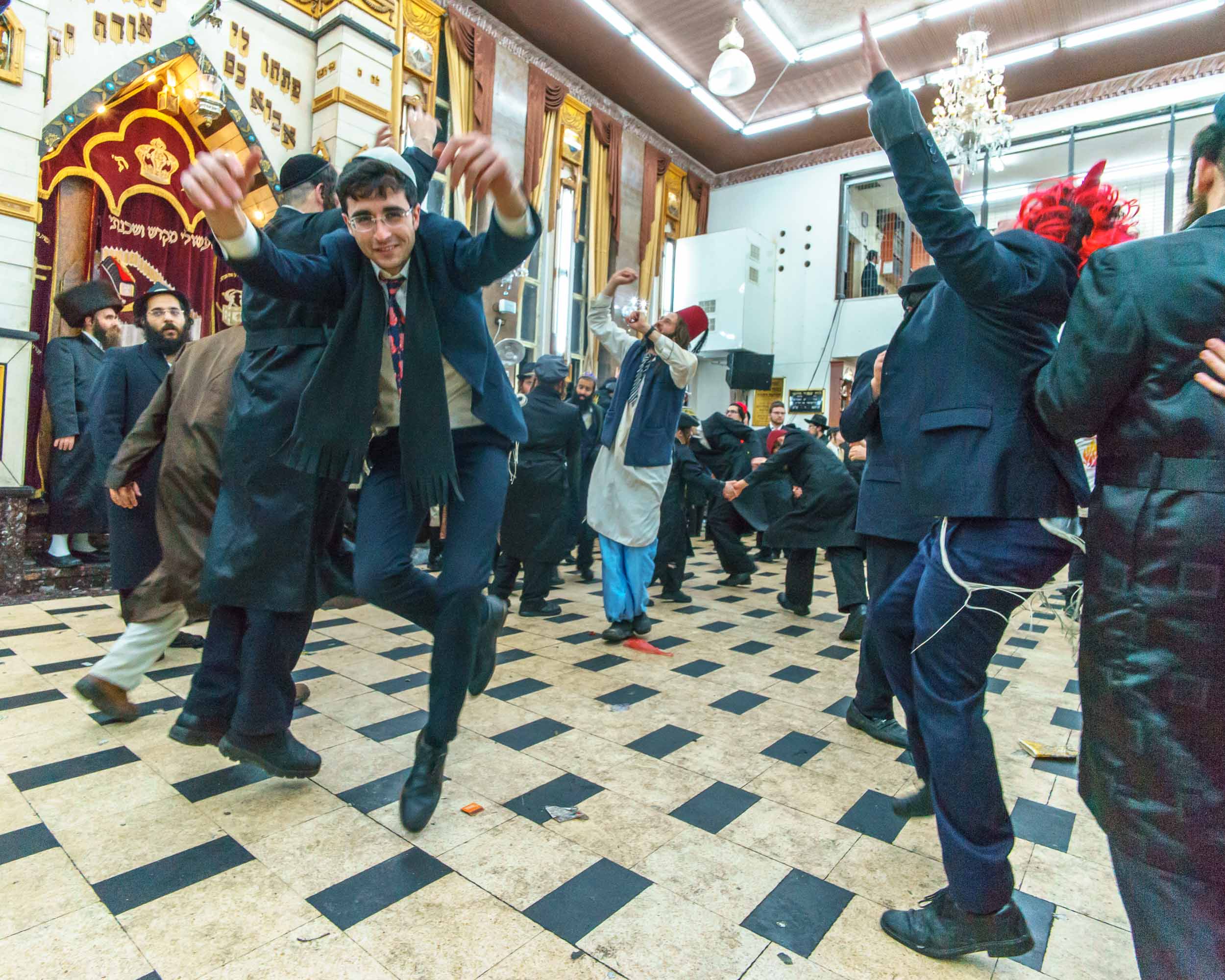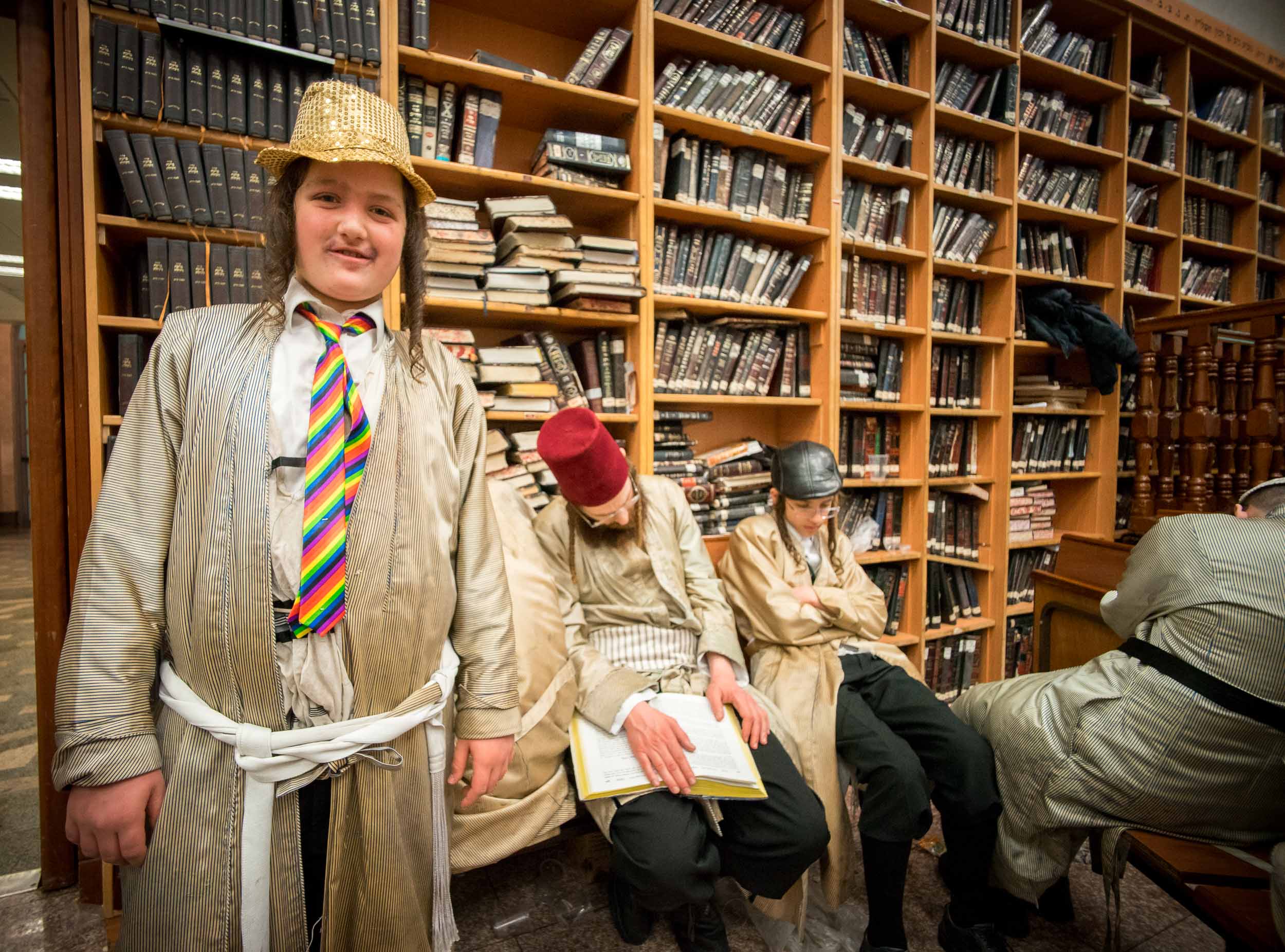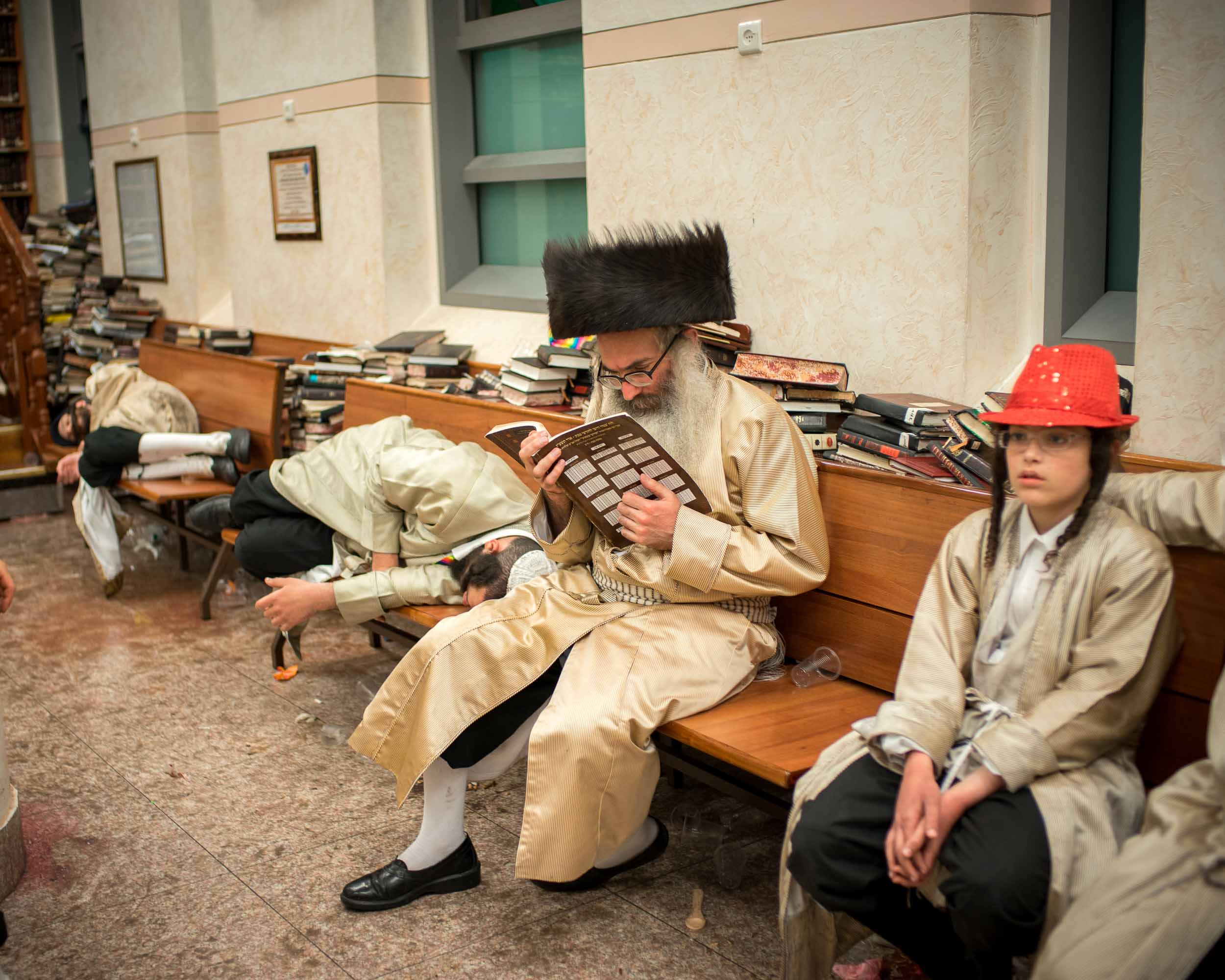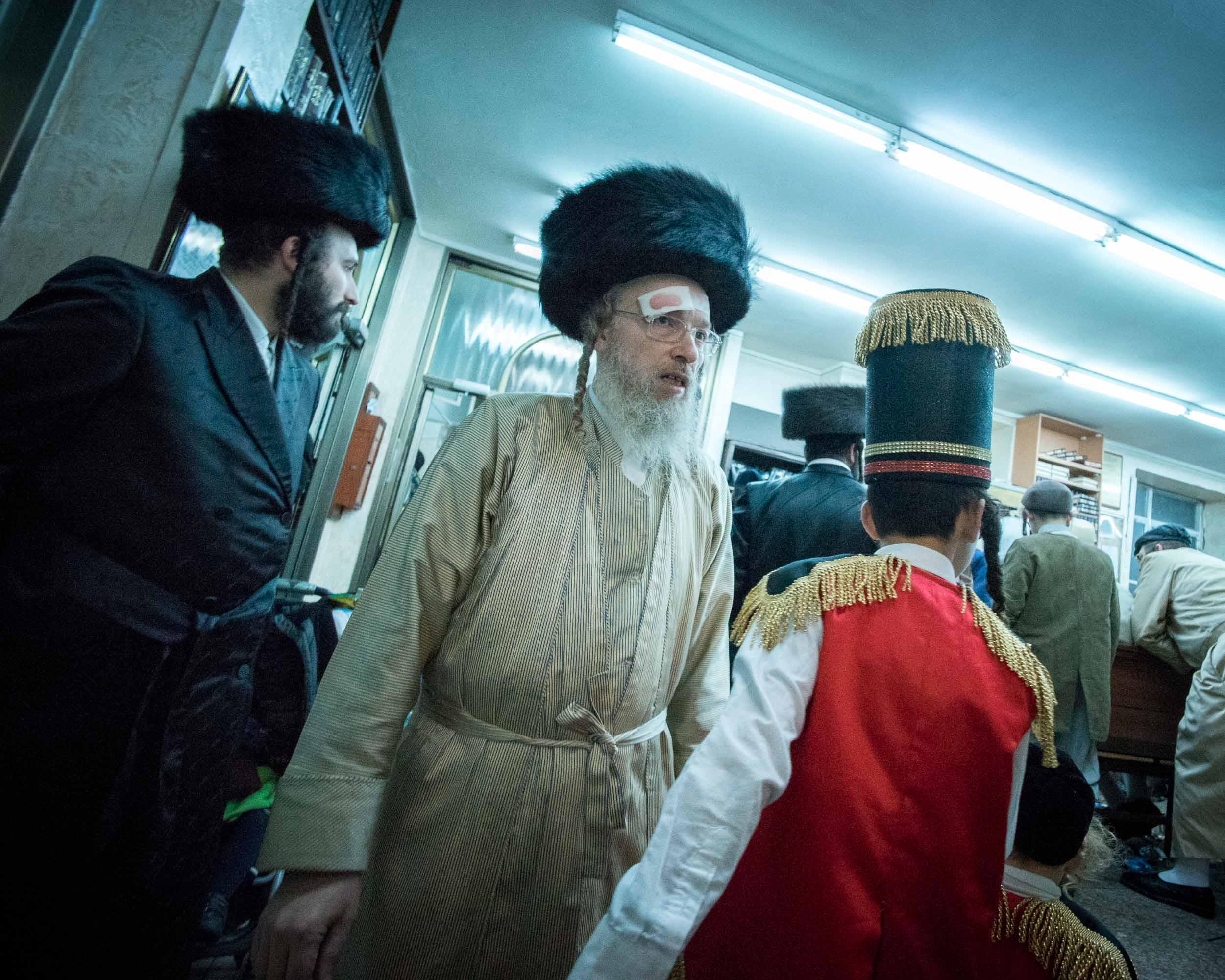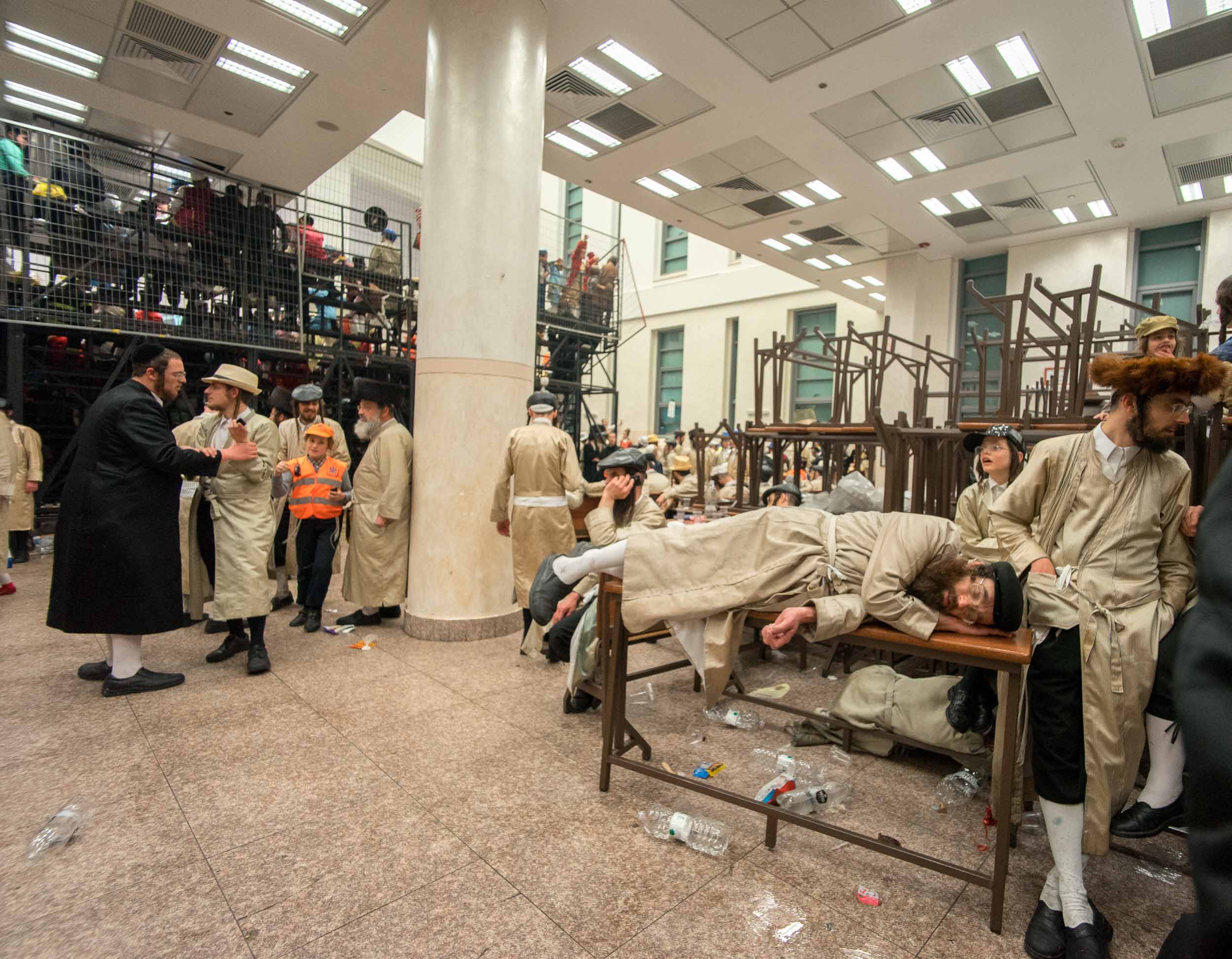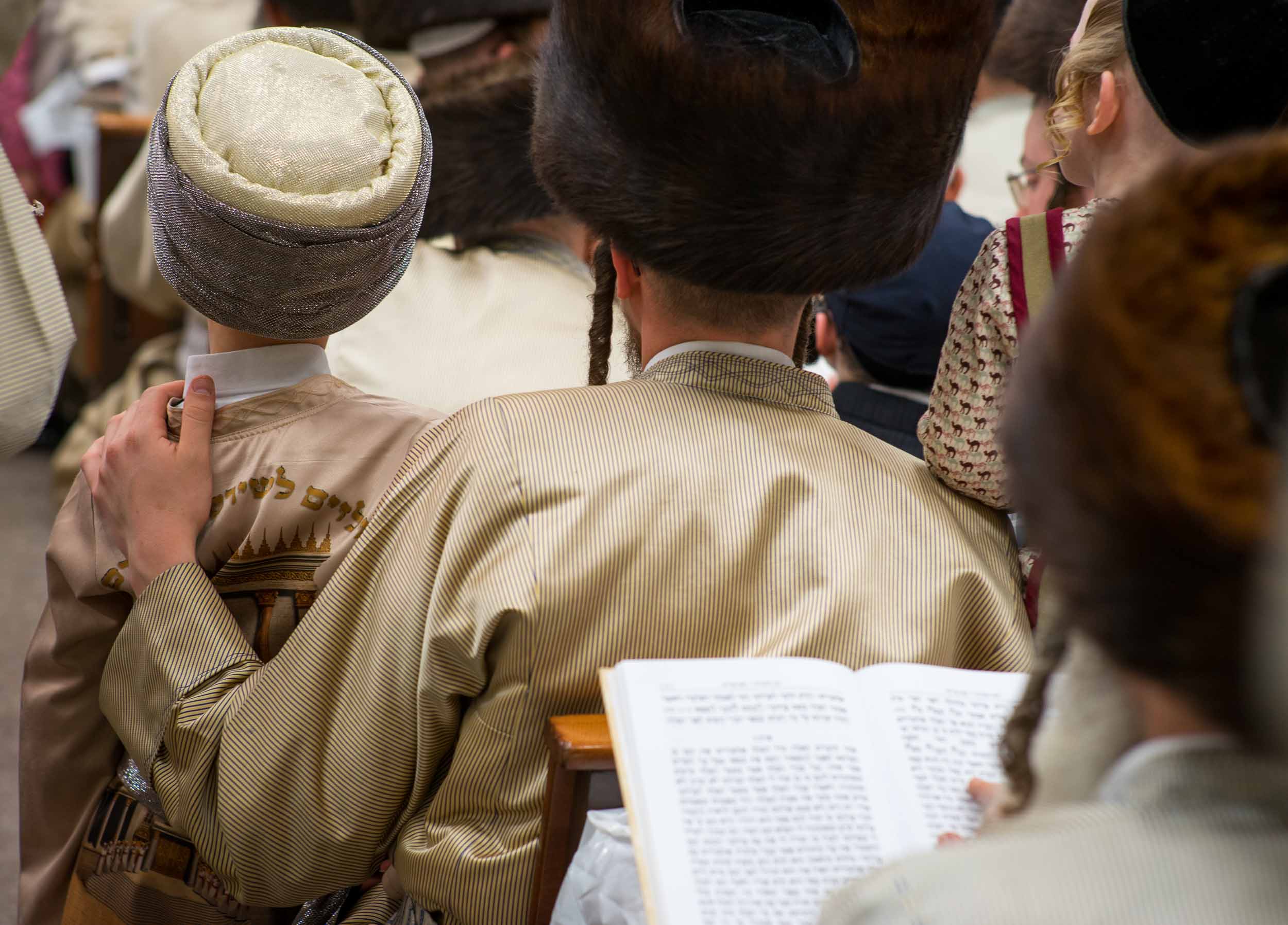Children probably shouldn’t smoke cigarettes. For the most part, we all agree on this point, and for the most part, we all feel the same way about binge drinking. But there is an exception to this rule. If you venture into the ultra-conservative, ultra-Orthodox neighborhood of Mea She’arim in Jerusalem, on the 15th of Adar (sometime around mid-March, for those who follow the Gregorian calendar), then you’ll be greeted by all the trappings of a raucous block party. There are slow-moving party vans with couches on the roof, blasting loud techno; crowds of smiling partygoers stumbling in and out of synagogues and yeshivas that have been cleared of prayer benches to make way for dance floors; and—of course—there are lots of little costumed drunk kids running around, smoking cigarettes.
It is an odd and unexpected sight, that’s frankly a little shocking. But there are a few good reasons for it. First off, it is Purim. It is a time to celebrate the liberation of the Jewish people from the threat of extinction. It is a time to celebrate the foiling of an evil plot to destroy them all. It is therefore an official rabbinical obligation for people to be joyful on on this day. I also suspect that people are taking advantage of a rare chance to let loose. These people are ultra-Orthodox. They practice Judaism hard, and I guess one day a year they deserve to party hard, too.
As the story goes, an evil vizier to the king concocted a plan to exterminate all of the Jews who were residing in diaspora in the Persian empire during the 4th century BCE. The vizier’s grudge against the Jewish people was due to one man’s unwillingness to bow to him. The king had recently honored the vizier by decreeing that everyone in the kingdom should bow to him, and afford him the same respect given to the king. The man’s name was Mordechai. The vizier’s name was Haman. As a Jew, Mordecai refused to bow to anyone or anything other than his god, and Haman took this to be a personal affront from all of the Jewish people. So he went to the king and got permission to destroy the Jewish people on the grounds that there was no hope that they would ever obey all of his laws. Fortunately, Mordechai’s adopted daughter, Esther, had recently won a beauty pageant and become a queen. As such, she had limited (but useful) access to the king, and used it to turn the tables on Haman and hang him on the very gallows he had built for Mordechai.







